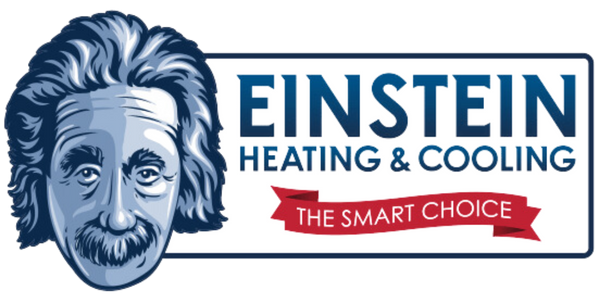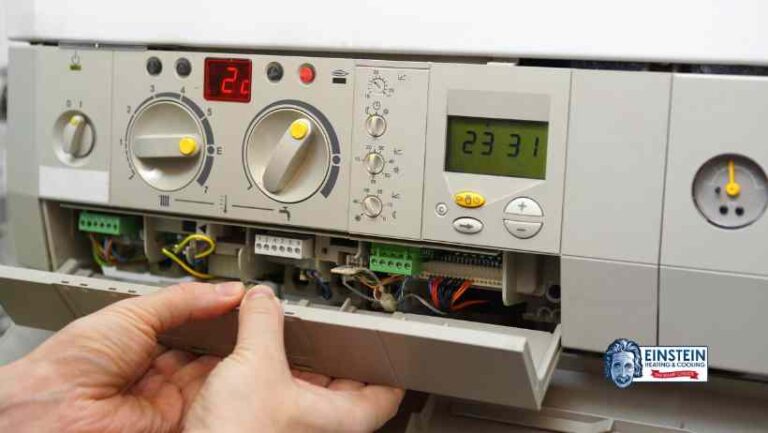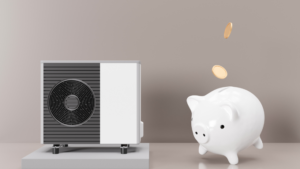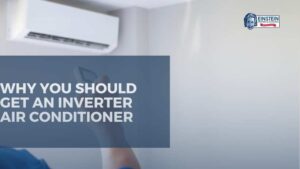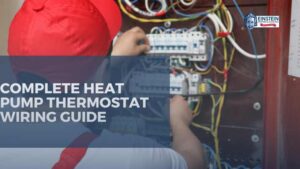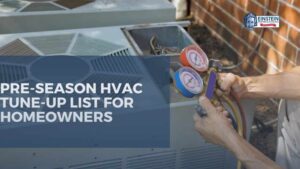As winter’s cold air approaches, the reliability of a well-functioning furnace becomes paramount for the comfort and warmth of any Bend home. However, like any intricate mechanical system, furnaces are not immune to the wear and tear that time and continuous use can impose. They can be subjected to multiple furnace repairs if they are not maintained properly. Familiarizing oneself with the most common furnace issues is essential for homeowners, ensuring their heating systems remain functional for years to come. In this blog post, we will delve into various furnace malfunctions, DIY repair tips, and the importance of calling the professionals.
1. Ignition System Failures
Pilot Light Issues
- Description: The pilot light can encounter challenges such as a weak flame or frequent extinguishing, leading to heating complications.
- Repairs: Mitigating such issues involves the meticulous cleaning of the pilot assembly, flame adjustment, or the replacement of a faltering thermocouple. Additionally, ensuring the pilot light area is free from drafts and debris is crucial for its consistent operation.
- DIY Tips: Regularly clean the pilot assembly, adjust the flame for stability, and replace a faulty thermocouple.
- When to Call Professionals: If the pilot light issues persist despite DIY efforts or if there’s a gas smell.
Electronic Ignition Problems
- Description: In the realm of modern furnaces, electronic ignition systems reign supreme. Yet, malfunctions can result in weak heating or, worse, complete loss of central heating in your Bend home.
- Repairs: Remedies may include addressing faulty ignition control modules, troubleshooting flame sensors, or exchanging malfunctioning electronic igniters. Periodic checks of the electronic components for signs of corrosion or wear can prevent sudden system failures.
- DIY Tips: Check for loose wiring, clean the ignition control module, and replace a malfunctioning electronic igniter.
- When to Call Professionals: If the electronic components need replacement or if issues persist after DIY checks.
2. Airflow Problems
Clogged Air Filters
- Description: The air filter, when neglected, can become a big problem, obstructing proper airflow and compelling the furnace to workl harder, potentially leading to overheating.
- Repairs: The solution to this common problem is routine replacement or cleaning of air filters, ensuring an unimpeded path for optimal airflow. Homeowners should be educated on the importance of regular filter maintenance and the potential consequences of prolonged neglect.
- DIY Tips: Regularly replace or clean air filters every 1-3 months, depending on usage.
- When to Call Professionals: If the airflow issues persist after filter replacement or if there are other system malfunctions.
Blower Motor Issues
- Description: A misbehaving blower motor can disrupt the delicate dance of airflow, resulting in uneven heating or, in severe cases, a complete system shutdown.
- Repairs: Nurturing the health of the blower motor involves tasks such as lubrication, belt replacement, or rectifying electrical glitches within the motor. Implementing a regular lubrication schedule and inspecting belts during routine maintenance can extend the motor’s lifespan.
- DIY Tips: Lubricate the motor regularly, check for loose belts, and ensure there are no electrical issues.
- When to Call Professionals: If the blower motor needs replacement or if there are electrical problems beyond DIY capabilities.
3. Thermostat Malfunctions
Inaccurate Temperature Readings
- Description: A thermostat that falters in reading the temperature accurately can lead to the furnace to either overheat or underperform in the warmth department.
- Repairs: The remedy to this often involves the recalibration or outright replacement of the thermostat to reinstate precision in temperature control. Furthermore, homeowners can invest in smart thermostats, which offer advanced features and precise temperature monitoring.
- DIY Tips: Calibrate or replace it if necessary to accomplish furnace repair on the thermostat. Ensure it’s not affected by nearby heat sources.
- When to Call Professionals: If the thermostat wiring needs replacement or if there are complex issues with the HVAC system.
Wiring Problems
- Description: A faulty or damaged wiring can disrupt the communication between the thermostat and the furnace.
- Repairs: The remedy involves closely looking for loose connections, addressing damaged wires, or, in some cases, replacing the entire wiring infrastructure of the thermostat. Regular visual inspections of wiring and proactive measures against rodent damage can mitigate wiring-related issues.
- DIY Tips: Regularly inspect and tighten loose connections. Replace damaged wires and insulate them properly.
- When to Call Professionals: If the wiring issues are extensive or if there’s a need for thermostat replacement.
4. Lack of Maintenance
Dirty Furnace Components
- Description: The accumulation of dirt and debris on pivotal furnace components can severely affect performance and efficiency.
- Repairs: Regular professional maintenance, encompassing the cleansing of burners, heat exchangers, and other vital components, is vital to keep the furnace clean. Educating homeowners about the importance of scheduled maintenance can foster a proactive approach.
- DIY Tips: Regularly clean burners, heat exchangers, and other vital parts. Use a vacuum or a soft brush for effective cleaning.
- When to Call Professionals: If there’s excessive buildup or if the cleaning process requires disassembly beyond DIY capabilities.
Neglected Lubrication
- Description: Inadequate lubrication of the furnace’s moving parts can lead to heightened wear, imperiling the overall functionality of the system.
- Repairs: The remedy involves the regular application of lubricants to motors, bearings, and other moving components during routine maintenance. A homeowner’s guide on DIY lubrication procedures can empower individuals to contribute to the longevity of their furnace.
- DIY Tips: Regularly lubricate motors, bearings, and other moving parts as per the manufacturer’s recommendations.
- When to Call Professionals: If there are unusual sounds or if parts show signs of wear that DIY lubrication cannot address.

5. Gas Supply Issues
Gas Valve Problems
- Description: The heartbeat of the furnace, the gas valve, can encounter malfunctions that disrupt the seamless flow of fuel, culminating in ignition issues or inadequate heat production.
- Repairs: Addressing this issue often entails the repair or replacement of faulty gas valves, ensuring the uninterrupted delivery of fuel. Periodic gas pressure checks and visual inspections can catch potential issues before they escalate.
- DIY Tips: Check for loose connections, clean the valve, and ensure there are no obstructions in the gas line.
- When to Call Professionals: If the gas valve needs replacement or if there are gas-related safety concerns.
Gas Burner Problems
- Description: Dirty or misaligned gas burners can lead to inefficient and disrupted combustion, which can lead to uneven heating or complete furnace failure.
- Repairs: Interventions range from the meticulous cleaning of burners to adjusting their alignment or replacing those that have lost their operational prowess. Educating homeowners on the significance of clean burners and the correlation with fuel efficiency can encourage proactive maintenance.
- DIY Tips: Regularly clean burners and adjust their alignment. Use a soft brush or compressed air for cleaning.
- When to Call Professionals: If there are persistent issues or if burners need replacement.
6. Overheating
Restricted Airflow
- Description: Overheating can happen with restricted airflow, potentially causing irreparable damage to the heat exchanger.
- Repairs: The remedy here is twofold — addressing the root causes of restricted airflow, be it through replacing air filters or ensuring proper ventilation. Homeowners can benefit from understanding the consequences of overheating and implementing preventive measures.
- DIY Tips: Address airflow issues by replacing air filters, ensuring proper ventilation, and checking for blockages.
- When to Call Professionals: If the heat exchanger is damaged or if the overheating persists despite DIY efforts.
Faulty Limit Switch
- Description: A limit switch causes damage to the furnace by refusing to turn off the furnace at the designated temperature, paving the way for overheating.
- Repairs: Interventions involve the recalibration or replacement of the limit switch to reinstate its role as the guardian of optimal temperature control. Routine checks of the limit switch during maintenance can prevent potential overheating crises.
- DIY Tips: Adjust or replace the limit switch if necessary. Ensure it’s correctly positioned and functioning.
- When to Call Professionals: If the limit switch needs intricate adjustments or if there are complex issues beyond DIY capabilities.
7. Strange Noises
Banging or Popping Sounds
- Description: Unusual noises can indicate issues such as ignition problems, dirty burners, or expanding and contracting ducts.
- Repairs: It’s important that the Bend homeowner extensively checks for damages in the furnace, with remedies ranging from cleaning burners to securing loose components. Homeowners should be encouraged to report and address unusual sounds promptly to prevent further damage.
- DIY Tips: Investigate and tighten loose components, clean burners, and ensure proper duct insulation.
- When to Call Professionals: If the source of the noise is challenging to identify or if there’s a need for extensive repairs.
Squealing or Grinding Noises
- Description: TThese noises often point to problems with the blower motor or other moving parts.
- Repairs: The remedy involves lubricating the motor, scrutinizing for loose components, or replacing parts that have succumbed to wear and tear. Regular checks for unusual noises and their prompt resolution can be emphasized for homeowners to prevent long-term damage.
- DIY Tips: Lubricate the motor, check for loose components, and replace damaged parts as needed.
- When to Call Professionals: If the blower motor needs replacement or if there are complex issues beyond DIY capabilities.
8. Ductwork Issues
Leaks or Blockages
- Description: Leaks or blockages in the ductwork can impede the proper distribution of heated air throughout the home.
- Repairs: The solution entails the sealing of duct leaks, the removal of blockages, and the fortification of proper insulation to ensure an unimpeded flow. Homeowners can benefit from understanding the role of well-maintained ducts in optimizing heating efficiency.
- DIY Tips: Seal duct leaks using duct tape or mastic sealant. Remove blockages and ensure proper insulation.
- When to Call Professionals: If there are extensive leaks or if duct repairs require professional expertise.
Inadequate Insulation
- Description: Poorly insulated ducts can lead to heat loss, reducing the furnace’s efficiency and effectiveness.
- Repairs: It’s important that the homeowner focuses on fixing the insulation around ducts to minimize heat loss and amplify overall efficiency. Educating homeowners about the correlation between insulation and energy efficiency can drive proactive measures.
- DIY Tips: Add insulation to ducts using foil-faced fiberglass insulation. Ensure proper sealing around joints.
- When to Call Professionals: If there’s a need for extensive insulation work or if professional assessment is required.
Why professional furnace repairs are important
- Expertise and Precision: HVAC professionals from Einstein Heating and Cooling bring a depth of expertise and precision to furnace repairs, ensuring accurate diagnosis and effective solutions. Their training and hands-on experience enable them to navigate the intricacies of heating systems, identifying underlying issues that might be overlooked in a DIY attempt.
- Safety Compliance: Furnace repairs often involve working with gas, electricity, and intricate components. Professionals are well-versed in safety protocols, minimizing the risk of accidents or hazards associated with handling these elements. Calling in experts ensures that repairs are conducted safely and in compliance with industry standards, safeguarding both the homeowner and the property.
- Access to Specialized Tools and Equipment: Furnace systems require specialized tools and equipment for efficient and effective repairs. HVAC professionals come equipped with the right instruments, allowing them to perform tasks with precision and address issues comprehensively. DIY attempts may lack access to these tools, potentially leading to incomplete repairs or inadvertent damage to the system.
- Timely Resolution: Professionals are adept at swiftly diagnosing and addressing furnace issues, minimizing downtime and ensuring a prompt return to optimal heating conditions. DIY endeavors might prolong the resolution process, especially if there’s a learning curve or if multiple attempts are needed to identify and rectify the problem. Professional intervention from Einstein Heating and Cooling ensures a timely resolution, particularly crucial during cold seasons when uninterrupted heating is essential for comfort.
- Long-Term Cost Savings: While it might seem cost-effective to handle furnace repairs independently, overlooking or misdiagnosing issues can lead to recurrent problems. Professionals bring a comprehensive understanding of heating systems, enabling them to address root causes effectively. Investing in professional expertise can result in long-term cost savings by preventing the need for frequent repairs and extending the overall lifespan of the furnace. Choosing professionals over DIY approaches is an economic decision that prioritizes sustained efficiency and reliability in the long run.
In conclusion
Being aware of these common furnace issues and implementing DIY tips can contribute significantly to the maintenance and longevity of your heating system. However, it’s crucial to recognize the limits of DIY efforts and seek professional assistance from Einstein Heating and Cooling when necessary. Regular maintenance, a proactive approach to furnace repairs, and knowing when to call in the professionals are the keys to ensuring your furnace operates at peak performance, providing warmth and comfort throughout the winter months in your Bend residence.
